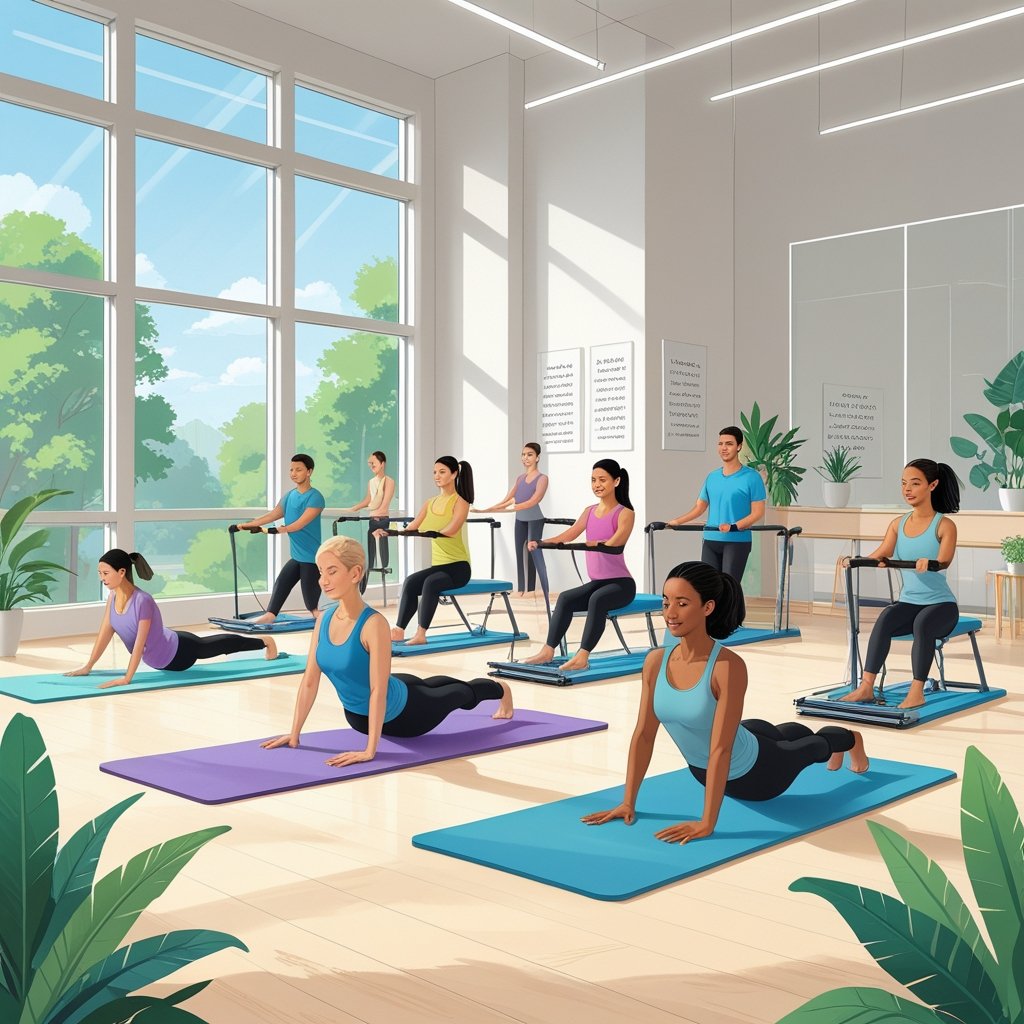After your first 30 days of Pilates, you can expect noticeable improvements in core strength, flexibility, posture, and mental well-being—even as a complete beginner. Many people experience reduced back pain, better balance, and mild muscle toning within just four weeks of consistent practice. Understanding what real Pilates results look like in the first month is important so you set realistic expectations and stay motivated. This article explains exactly what happens during your first month, key physical and mental changes to expect, and what is (and isn’t) realistic for your “before and after.” We’ll also answer the most common questions and link to trusted official resources so you have accurate, up-to-date information.

What Happens in Your First 30 Days of Pilates?
Pilates is a low-impact, full-body workout system focusing on controlled movement, core engagement, and breathwork. Whether you join a studio or follow online classes, most beginners doing Pilates 2–4 times per week notice:
- Stronger core and improved abdominal control
- Increased flexibility—especially in the spine and hamstrings
- Better posture and body alignment
- Less back pain or joint tension
- Higher energy and improved mood
A 2024 review published in the Journal of Physical Therapy Science confirmed that even four weeks of beginner Pilates leads to measurable gains in core endurance and flexibility, especially when combined with healthy habits.
Physical Changes: Before and After Pilates (1 Month)
Core Strength & Posture
Most people notice a firmer, more engaged core and better posture within 10–12 sessions. Everyday movements—like standing up, walking, or sitting at a desk—feel easier and more stable.
- Expect to see subtle muscle definition in your abs, arms, and legs.
- Improved posture can make you look and feel taller and more confident.
Flexibility & Balance
Pilates significantly boosts flexibility and balance even after just 2–4 weeks. You might touch your toes more easily, experience less stiffness, and move with greater control.
- Looser hamstrings and a more flexible spine are typical.
- Balance improves, making daily tasks and other workouts safer.
Pain Relief & Mobility
Pilates is proven to reduce mild lower back pain and increase mobility. The Mayo Clinic and Johns Hopkins Medicine both recommend Pilates for people struggling with chronic pain.
- Less back or joint pain after 10–15 sessions is common.
- Greater joint mobility and reduced risk of injury.
Weight Loss & Body Composition: What’s Realistic?
Rapid weight loss is NOT typical in your first month of Pilates. While you might lose 2–5 pounds if combining Pilates with a healthy diet, most early changes are in muscle tone and body awareness, not dramatic fat loss.
- Visible “before and after” transformations usually require 2–3 months plus dietary changes.
- Pilates builds lean muscle, which may improve how your clothes fit even if the scale doesn’t change much.
A recent 2024 survey by Women’s Health Magazine found that most participants felt stronger, more toned, and more flexible in four weeks, with minor weight changes.
Mental and Emotional Benefits After 30 Days
Pilates isn’t just about physical change—it’s proven to boost mood, reduce stress, and improve mental clarity. According to Psychology Today, people report:
- Less anxiety and stress
- Better sleep
- More self-confidence
- Improved body awareness
The mind-body focus of Pilates makes it an excellent tool for overall well-being.
Real-World Results: What Do Beginners Say?
Case Study Example
- 3–4 sessions/week at home: A Reddit user lost 5 pounds and reported no back pain after three weeks of mat Pilates.
- Studio beginner: Many first-timers say they feel “taller” and more agile in everyday life, even before seeing major visual changes.
Typical “Before & After” in 30 Days
| AreaBefore PilatesAfter 30 Days of Pilates | ||
|---|---|---|
| Core Strength | Weak or unstable core | Noticeable abdominal engagement |
| Flexibility | Tight hamstrings, stiff back | Improved range of motion |
| Posture | Slouching, forward head | Straighter, taller posture |
| Pain & Mobility | Some aches or tightness | Reduced pain, easier movement |
| Mental Wellness | Stressed, low energy | Calmer, better mood, more energy |
What’s Not Typical After 30 Days?
It’s important to have realistic expectations. Pilates is not a “quick fix.”
- Don’t expect dramatic fat loss, six-pack abs, or “transformation photos” in just a month.
- Visible muscle definition and significant body changes often take 2–3 months of consistent effort.
Tips to Maximize Your Pilates Results
- Aim for at least 3 sessions per week for steady progress.
- Combine Pilates with a balanced diet for better fat loss.
- Try both mat and reformer classes for variety.
- Track your progress—journal your flexibility, core strength, and energy changes weekly.
FAQs: Your First 30 Days of Pilates
Q: Can I do Pilates every day?
A: Yes, if you listen to your body and alternate intensity levels.
Q: Will I lose weight?
A: Some do, especially if making dietary changes, but most early changes are strength, posture, and flexibility.
Q: Is Pilates safe for beginners?
A: Absolutely! Most classes offer modifications for all fitness levels.
Conclusion
After your first 30 days of Pilates, you’ll feel stronger, more flexible, and less stressed—even if you don’t see dramatic physical changes yet. Stick with it, and your “before and after” will only get better over time. Ready to feel the difference? Start your Pilates journey today—your body and mind will thank you!
Sources:
1. Journal of Physical Therapy Science, 2024
2. Mayo Clinic – Pilates for Beginners
3. Johns Hopkins Medicine – The Benefits of Pilates
4. Psychology Today – How Pilates Can Help Mental Health (2024)
5. Women’s Health Magazine – Pilates Results
